Soccer Position Numbers, Player Numbers, And Jersey Numbers Explained
Soccer position numbers and player numbers can cause a lot of confusion for soccer fans and soccer coaches alike. This is because when talking about soccer player numbers, one could be talking about the number on the back of a player’s jersey or the player’s position number. These days, more often than not, a soccer player’s position number does not correspond to the player’s jersey number. To help make things clearer, we’ve put together this guide which explains exactly what the soccer player numbers mean, the soccer position numbers, and the roles that these numbers correspond to in different formations. But first, let’s take a look at the meaning of a player’s jersey number in soccer, which is different from a player’s position number.
The Meaning Of Soccer Jersey Numbers
What’s the meaning of a soccer player’s jersey number? Essentially nothing. Although certain professional players, such as Cristiano Ronaldo, have built their brand around a certain jersey number (7), in youth soccer a player’s jersey number just corresponds to the squad number they picked at the start of the season.
Although the numbers on the back of soccer players’ jerseys can correlate with their position on the field, they often do not. And so it’s best to think of players’ jersey numbers or squad numbers, as completely separate from position numbers, which we will detail later.
How Are Soccer Jersey Numbers Assigned?
Within a professional soccer squad, everyone is assigned a number which is placed upon the back of the player’s jersey along with their name. Players often get to pick their own number and it usually ranges from 1-99, with most players choosing the lower numbers. Players usually keep their numbers from season to season but can change it if, for example, a new marquee player joins the squad and wants a specific number or someone retires or leaves the team and a new number becomes available. In youth soccer, players usually re-choose their numbers at the start of a new uniform cycle with new players to the squad getting to choose from those numbers leftover.
Soccer Position Numbers
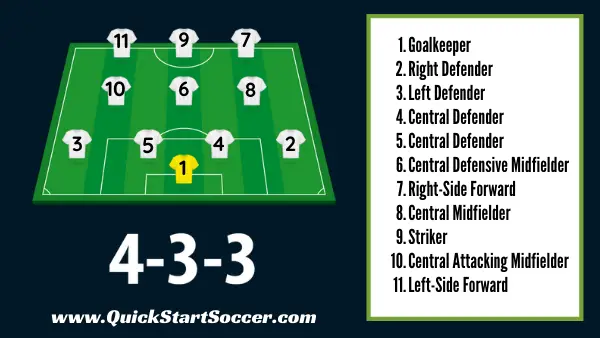
Soccer position numbers are numbers that correspond to a particular position on the field. Regardless of the formation played, the position numbers will always be numbers 1 to 11, with each number referring to a player’s position or role on the field. In the most commonly used 4-3-3 formation, the numbers correspond to the following positions:
- Goalkeeper
- Right Defender
- Left Defender
- Central Defender
- Central Defender
- Central Defensive Midfielder
- Right-Side Forward
- Central Medfielder
- Striker
- Central Attacking Midfielder
- Left-Side Forward
Soccer Position Numbers In Different Formations
There are, of course, many different formations in soccer and so the positions or roles that these numbers correspond to in different formations can be slightly different. Player positions are still numbered 1 to 11 in different formations, but some of the position numbers change to reflect the different roles players take on in these formations.
The most popular formations currently used by top teams include 4-2-3-1, 3-4-3, 3-5-2, and 4-4-2. Let’s look at each of these formations in turn and which positions each of the player numbers represents.
The 4-2-3-1 Formation
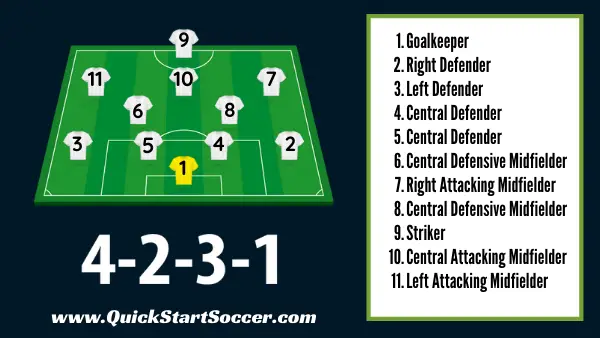
In this formation, the goalkeeper and the four defenders are represented by the same numbers as they are in the 4-3-3 with things starting to change in midfield. There are two defensive midfielders rather than one, with the (6) and (8) occupying these positions. Ahead of the 2 defensive midfielders are 3 attacking midfielders. The attacking central midfielder is (10), the right attacking midfielder is (7) and the left attacking midfielder is (11). Ahead of them is the lone central striker which is again the number (9). Read The Full 4-2-3-1 Formation guide.
The 3-4-3 Formation
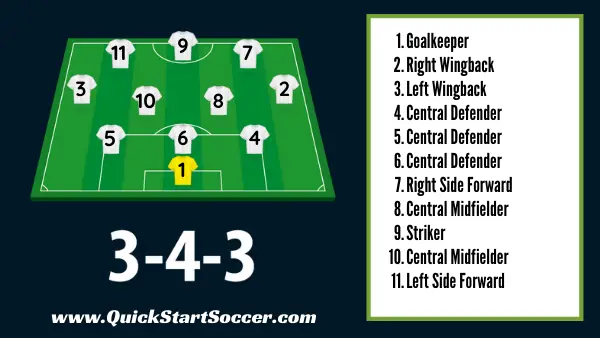
In the 3-4-3 formation, there are three central defenders so the (6) drops back to join the (4) and (5) in the middle of the defense. The outside defenders (2) and (3) push up into midfield and are often referred to as wingbacks in this formation. The two central midfielders (8) and (10) make up the rest of the midfield 4 with (7), (11), and (9) occupying the traditional 3 forward positions. Read The Full 3-4-3 Formation Guide.
The 3-5-2 Formation
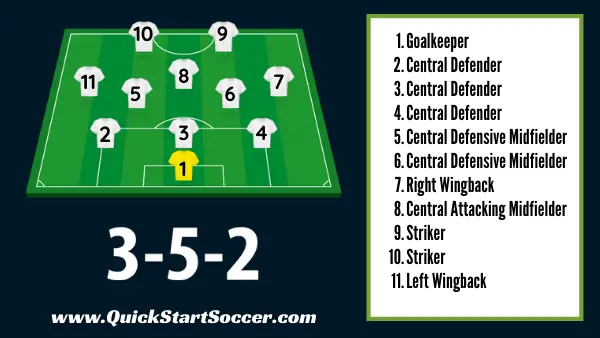
In the 3-5-2 formation the 3 central defenders are numbered (2), (3), and (4). There are 2 attacking wingbacks numbered (7) and (11), and three central midfielders numbered (5), (6), and (8). Quite often the number 8 is the most attacking of the three central midfielders in this formation. There are also two central strikers which are numbered (9) and (10). Read The Full 3-5-2 Formation Guide.
The 4-4-2 Formation
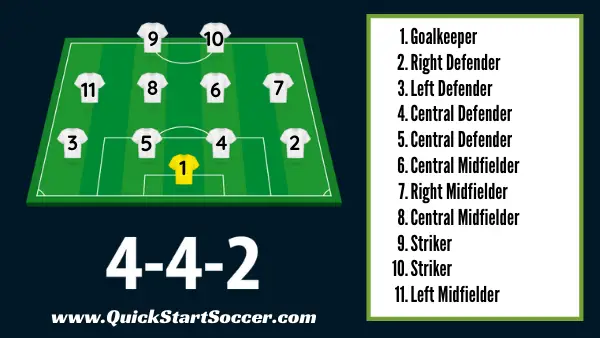
Finally, the 4-4-2 formation has the traditional 4 defenders and 2 central midfielders which are the (6) and the (8). The left and right midfielders are (11) and (7) respectively, and there are two central forwards which are (9) and (10). Read The Full 4-4-2 Formation Guide.
Wrapping Up
Thanks for reading. I hope the meaning of the numbers in soccer and the soccer position numbers are now a lot clearer. Before you go, be sure to check out our free soccer drills for activities you can use in your next training session.


